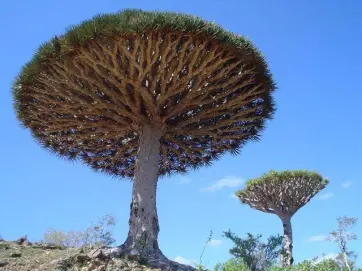How long is the lifespan of plants? This is still a mystery. People often say: “It is hard to wait for the iron tree to bloom in a lifetime.” In fact, the lifespan of the iron tree is not long. Among the common plants we see, fungi have the shortest lifespan, followed by rice, corn, barley and other grass plants; the lifespan of trees is significantly longer than other plants. But among tall trees, the lifespan of pine, cypress, fir and other trees is significantly longer than that of economic crops such as fruit trees and oil tea trees. People already know that the lifespan of apple, grape, pear, jujube and walnut trees is 100-400 years, maple, elm, birch, camphor and other trees is 500-800 years, and pine, cedar, cypress, ginkgo, spruce, giant sequoia and other trees is 1500-4000 years. The giant sequoia that can grow for 4000 years is not the longest lifespan. According to relevant information, the longest-lived tree may be the dragon blood tree. It is an evergreen tree that was first discovered in Africa and can grow to more than 20 meters high. Among them, a dragon blood tree growing on the island of Orta in the Canary Islands of North Africa has a life span of more than 6,000 years, which was measured 500 years ago. Unfortunately, it did not survive to this day and was destroyed in a big storm in 1868. If it had not been blown down by that strong wind, it might still be alive today, and even live for another two or three centuries or longer. my country used dragon blood trees to make the traditional Chinese medicine “Xuejie” 1,500 years ago, which was mainly used to stop bleeding and treat injuries from falls. It was recorded in the pharmacopoeia of the Southern and Northern Dynasties as early as 1972. For more than 1,000 years, people have been puzzled about whether there are dragon blood trees in my country. Until 1972, scientific and technological personnel from the Yunnan Tropical Botanical Research Institute, led by Professor Cai Xitao, a famous botanist in my country, finally discovered a large area of wild dragon blood trees on the limestone in Xishuangbanna, Yunnan. At present, more than 20,000 wild dragon blood trees have been found in the three autonomous counties of the Dai, Lahu and Wa ethnic groups in Yunnan alone. So, how many dragon blood trees are there in my country? How old are they? It is not clear for the time being. The root system of the dragon blood tree is very tenacious. It can penetrate deeply into the cracks of rocks and make passages through the cracks, making it evergreen for thousands of years. Perhaps people have not yet discovered that the longest-lived plants are not tall trees, but some perennial weeds that are drought-resistant and barren-resistant, such as cacti that do not die from drought and ground roots. Among ferns, there is also a kind of resurrection plant called Selaginella. Selaginella, which lives in the cracks of dry rocks, will curl up its branches into a ball when it encounters drought and will no longer stretch. When the rainy season comes, the curled branches will unfold and continue to grow. In addition, Selaginella can also “pull out” its roots from the waterless soil, roll its body into a ball, and roll with the wind to find a place suitable for its growth. This plant that can “move itself” and “nomadic” is unmatched by other plants. Since plants such as Selaginella and Bryophyllum have these special abilities, it is difficult to calculate their lifespan or age.

